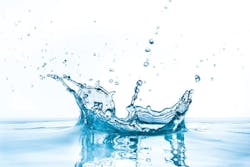Prefiltration Preamble
About the author: Henry Frank is vice president of business development for Argonide. Frank can be reached at [email protected].
Reverse osmosis (RO) membrane technology is an important and widely used technology for water treatment. Used in many industries, the technology has incrementally improved over the years. Yet, the potential for fouling RO membranes has remained a constant source of concern.
Membrane fouling is an inevitable issue that affects the cost of ownership of any RO system. Problems associated with membrane fouling include higher operating pressure and increased energy consumption; a decline in flux or water production; more frequent chemical cleaning; and shorter membrane lifespans.
Causes of membrane fouling include biofouling, organic fouling and colloidal fouling. Prefilter elements are accepted throughout the industry as the primary weapons to keep membranes operating at peak efficiency; however, how well a filter will keep membranes from prematurely fouling often is in question.
It is with this question in mind that RO membrane manufacturers devised the metric known as Silt Density Index (SDI).
Defining SDI
The term silt encompasses a range of suspended particulate contaminants, all of which can accumulate on a membrane’s surface. Examples of such suspended materials include organic colloids (including tannins), iron corrosion products, precipitated iron hydroxide, algae, microorganisms and other fine particulate matter. In most cases, these particles are small enough to be considered colloidal, thereby remaining in suspension. Such fine particles can be challenging to remove. Colloids are defined as substances that consist of particles dispersed throughout another substance. They are too small to see with an ordinary light microscope, but are incapable of passing through a semipermeable membrane.
Similar to turbidity, SDI refers to the quality of a water supply. It is not a value placed on a prefilter, rather it is a value placed on the quality of the water produced by the prefilter. SDI testing is a widely accepted method for estimating the rate at which colloidal and particle fouling will occur in water purification systems, especially using RO or nanofiltration membranes.
SDI is a measurement of the fouling potential of suspended solids. It does not measure the quantity of particulate matter since the size and shape vary. Turbidity measures the amount of suspended solids. They are not the same and there is no direct correlation between the two measurements. In practical terms, however, membranes show little fouling when the feedwater has a turbidity of less than 1 ntu. Correspondingly, the membranes show low fouling at a feed SDI of less than five.
A target SDI value of less than five for a membrane’s feedwater is not only desired, but also in some cases is a requirement of membrane manufacturers to maintain a warranty on their products. With improvements in filtration technologies, the SDI target now often is less than three. Regardless of the desired value, the dictum of “less is better” applies. The closer to a value of zero, the better.
The SDI Test
The SDI test is used to predict and prevent particulate fouling on a membrane surface. Other names for it are the Kolloid-Index or the Fouling-Index. The test is defined in ASTM Standard D4189-07.
When done manually, it is performed using a 0.45-µ, 47-mm-diameter filter. To determine the SDI value of the water a filter produces, water is passed through the filter and then is directly supplied to the filter at a constant pressure of 30 psi. The test measures the time it takes to collect a 500-mL sample through the filter at the start of the test and compares it with the time it takes to collect a 500-mL sample after water has flowed through the filter at 30 psi for 15 minutes. The sample times are applied to a formula to obtain the SDI-15 value (see Figure 1).
The resulting value indicates the plugging of the membrane in percent-per-minute. Accordingly, the maximum SDI-15 value is 6.7. An SDI-15 value greater than five is considered too high to be meaningful (75% plugging).
On waters with high SDI, it often is useful to measure the SDI at 5- and 10-minute intervals. The resulting values, SDI-5 and SDI-10, can provide a better indication of the rate at which the membrane is plugging. If the SDI-5 is 15, there is no point in taking the time to conduct an SDI-15 test. In this case, the water being tested is simply too high in colloidal or particulate matter to obtain a meaningful result.
Some industry professionals believe SDI is not sensitive enough to address some of the foulants for RO membranes. This group believes that particles smaller than 0.45 µ are of concern. However, until the industry considers this and generates an alternative to current SDI procedures, the value of SDI remains true today.
Choices for RO Prefiltration
RO operators have many choices as to what they prefer to use for protecting membranes. There often are trade-offs that must be considered, and solutions typically revolve around a tighter pore structure for better protection. While this is conventional wisdom, it is tempered by concerns of higher pressure drop and a shortened service life. Some of this has been addressed with the use of ultrafilters that can be backwashed as part of a maintenance program. That introduces water waste concerns unless an efficient recycle loop is incorporated in the system’s design.
More recently, charged media technologies have been introduced to the equation, overcoming many of these concerns. While such filters require regular replacement, the cleaning cycles for the membranes are extended to reduce the need for and cost of labor, time and materials.
